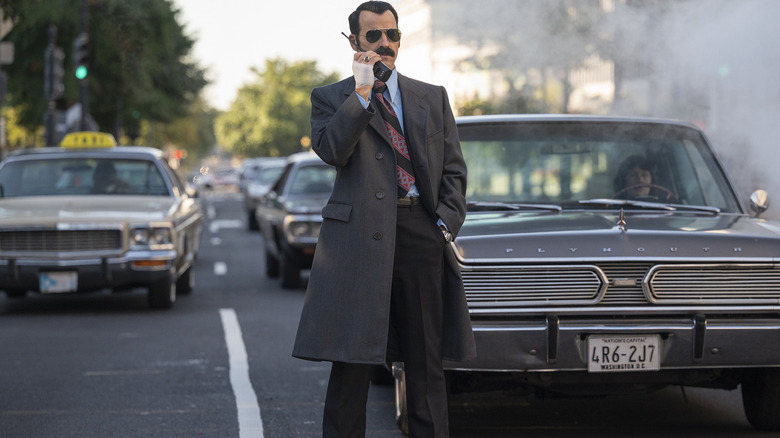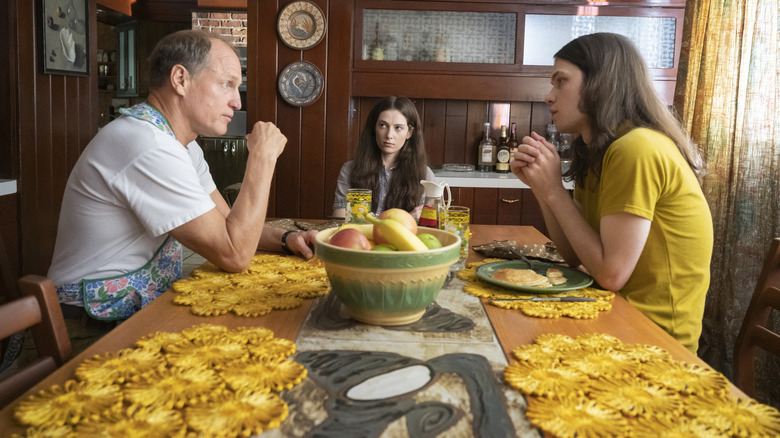Where Was White House Plumbers Filmed?
The Watergate scandal from a different angle. That is essentially the hook for the HBO series "White House Plumbers," based on the book by Egil "Bud" Krogh and Matthew Krogh.
Set during Richard Nixon's presidency, it begins with G. Gordon Liddy (Justin Theroux) and E. Howard Hunt (Woody Harrelson) on a mission orbiting the leak of the Pentagon Papers, a leaked historical study covering the United States military and political involvement in Vietnam that cast the Johnson administration in a bad light. At the conclusion of Episode 1, they become entangled in the Committee to Re-Elect the President's scheming to bug the Democratic National Committee offices at The Watergate in Washington. But while the political series is primarily based in the nation's capital, it was filmed in several places.
According to the Times Union, crew members were spotted in Albany, New York during the summer of 2021. They filmed at the New York State Capitol building and visited other nearby spots. According to Lohud, they worked south of Albany as well, filming in portions of the Hudson Valley.
The crew made their way to Washington, D.C. as well; according to Washingtonian, the area surrounding the Eisenhower Executive Office Building revisited the 1970s, with location manager Steve Grivno telling Visit Westchester NY, "Our directive for aesthetics was mid-century modern. We were looking for old properties with dark wood, old floors, and original architectural details such as wall and ceiling molding, period doorknobs and windows, and marble ..."
But the backdrop is just one part of an essential time machine equation.
How White House Plumbers balances two decades
Automobiles and fashion play a big factor in helping the cast and the audience jump back in time to the '70s. According to NBC4 Washington, Porches and an AMC Gremlin were spotted while crews filmed along the streets of Washington, D.C. Eagle-eyed viewers may also spot license plates resembling those from the 1970s. Despite being set in 1971 and 1972, the show draws heavily from the 1960s; it all had to do with how people bought things back then.
Hudson Valley Film Commission director Laurent Rejto told The Poughkeepsie Journal that the production requested cars from both decades. The transition from the 1960s to the 1970s is something the costume department focused on as well.
"People didn't do fast fashion the way we have it now," costume designer Leah Katznelson told Women's Wear Daily when discussing the early '70s. "So, if you bought something, you bought it to last. A lot of things would have transitioned from the '60s to the early '70s."
She drew upon the 1960s for E. Howard Hunt's wardrobe, as well as other characters, using more modern dress as a signifier. "Depending on who was being dressed, whether it was a character that was more conservative or older, I leaned more into the '60s," she explained. "If it was a younger character or someone who was more current feeling ... we leaned more '70s."

